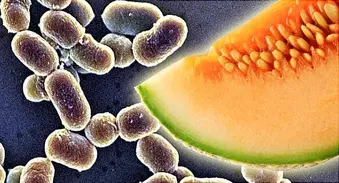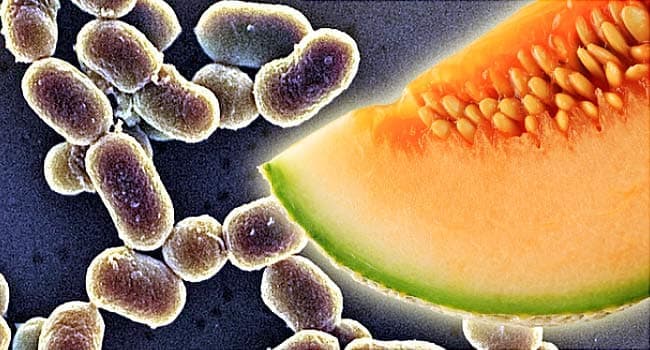Food Bacteria Quiz: How Much Do You Know About Listeria?


What is listeria?
- A brand of mouthwash
- A strain of bacteria
- A strain of virus
- A strain of fungus
Like the famous mouthwash Listerine, Listeria monocytogenes was named after antiseptic pioneer Joseph Lister. It's a very common bacterium with an unusual trait: It can grow at refrigerator temperatures. And it can build up in food-processing plants, where it can survive for years.
Where is listeria found?
- Soil
- Animal feed
- Water
- All of the above
Listeria is found in soil, groundwater, animal feed, sewage, and even dust. It primarily lives in soil, where the bacterium eats decaying plants. But once it makes its way into the food supply and is eaten by a human, listeria transforms into a very different bug -- one that can live inside human cells.
What foods are most often contaminated with listeria?
- Pasteurized milk products
- Frozen vegetables
- Deli meats
- Canned soups
Because listeria can grow at refrigerator temperatures and high salt concentrations, cured meats kept in the refrigerator can support listeria growth. Unpasteurized milk, unpasteurized milk products, refrigerated smoked seafood, and raw sprouts have also been implicated in listeria outbreaks. But listeria can grow on many different foods, particularly if they are stored in a contaminated refrigerator. The nationwide U.S. listeria outbreak of 2011 -- the largest in more than a decade -- was traced to cantaloupes.
Who is most at risk from listeria?
- Pregnant women
- People over age 60
- People with diabetes
- All of the above
The healthy immune system usually keeps listeria in check. Healthy people usually get only mild diarrhea from listeria, if they get any symptoms at all. But immunity wanes each decade after age 60, so the elderly are at risk. Pregnancy, especially the third trimester, makes a woman vulnerable to listeria. And people with diseases (such as HIV or diabetes) or who take medications that lower immunity are at high risk.
Why is listeria so deadly?
- It attacks the brain and nervous system.
- It causes cancer.
- It contains a deadly poison.
- It is highly contagious.
In most healthy people, the immune system eliminates listeria-infected cells before the infection can spread. But when listeria escapes the gut, it gets into the blood. From there it can spread throughout the body, causing a disease called listeriosis. Listeriosis can cause deadly encephalitis and meningitis, killing some 20% of patients. Listeria causes about 19% of all U.S. deaths from food-borne infections.
Why are pregnant women at high risk from listeria?
- They are at high risk of serious listeriosis.
- They eat more listeria-contaminated foods.
- They risk miscarriage or preterm birth from listeria.
- All of the above
Pregnant women usually do not develop serious listeriosis themselves, just a mild flu-like illness. But once listeria gets into a pregnant woman's blood, it seeks out the placenta. From there it can infect the fetus and cause stillbirth, miscarriage, or preterm birth. During birth from a woman carrying listeria, the bacteria can infect the newborn. Neonatal listeriosis can cause fatal or disabling meningitis.
What are common symptoms of listeriosis?
- Fever and muscle aches
- Loss of balance
- Stiff neck
- All of the above
Listeriosis may start with diarrhea or other intestinal symptoms. But serious disease starts with fever and muscle aches. Other symptoms often include headache, stiff neck, confusion, loss of balance, and convulsions.
How long after eating listeria-contaminated food do severe symptoms appear?
- Immediately
- Within 24 hours
- 2 days
- 3 days to 2 months
The time between eating listeria-contaminated food and having listeriosis symptoms ranges from 3 days to 2 months. Most people seem to get symptoms within 1 to 3 weeks.
What is the treatment for listeriosis?
- Gluten-free diet
- Intravenous antibiotics
- Anti-seizure medication
- None of the above
Because it is so deadly, listeriosis is treated with intravenous antibiotics. Treatment lasts 2 weeks if the central nervous system is not infected, 4 weeks if it is. Nearly all patients are hospitalized for at least a few days.
How can you avoid listeria infection?
- Wash your hands after preparing raw vegetables.
- Thoroughly cook all meat, poultry, and seafood.
- Eat ready-to-eat foods as soon as possible.
- All of the above
Here's the FDA's advice on how to prevent listeriosis:
- Do not consume unpasteurized milk or milk products.
- Wash hands, knives, countertops, and cutting boards after handling and preparing raw foods.
- Rinse raw produce thoroughly.
- Keep uncooked meat, poultry, and seafood separate from all other foods.
- Thoroughly cook meat, poultry, and seafood.
- Eat perishable and ready-to-eat foods as soon as possible.
- People at risk should heat hot dogs, cold cuts, and deli meats before eating them.
You can remove all listeria by washing a cantaloupe.
- True
- False
If you suspect you have a contaminated cantaloupe, you should dispose of it. But other cantaloupe should be washed to reduce risk. Before cutting, scrub the surface of the melon with a clean produce brush and dry it with a clean towel.
If you suspect you've had a listeria-contaminated food in your refrigerator, you should:
- Call a doctor immediately.
- Rush to a hospital.
- Thoroughly clean your refrigerator.
- All of the above
Unless you are absolutely sure you have eaten listeria-contaminated food, there's no reason to seek immediate medical care unless you have symptoms of food poisoning. If you suspect you have had listeria-contaminated food in your refrigerator, it may be wise to throw out other foods. Wash your refrigerator with soap and water and wipe it down with a diluted solution of chlorine bleach and water.
